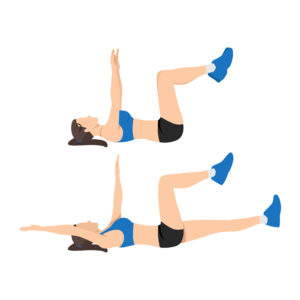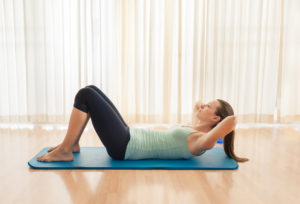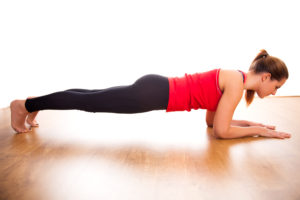
What is the Core?
The core is not just the rectus abdominus muscle, casually referred to as the Abs, but rather the core is a series of muscles all connected through fascial links that stabilize the spine to produce, transmit, and receive forces generated by the extremities. To function properly, the core requires proper timing and sequencing (achieved through training) of muscle activation for increased stability and force production.
Benefits of Having a Strong Core:
- Force production- With a strong core, the body spends less time and resources trying to produce movement thus making you more efficient. Think about trying to anchor yourself with a rope. You would be more effectively anchored to a light pole compared to kitchen chair. The kitchen chair is going to move and give way when tugged at thus creating an unstable base. The core is similar. You want you core to be stable, so when it is tugged at from the arms and from the legs, there is a strong base from which you can generate power.
- Injury prevention- Current research suggests that decreased core stability increases the risk for injuries, particularly low back injuries. Without adequate stability to the spine during movements, increased tension is placed on boney structure and disc putting them at risk. Low back pain is one of the most common movement disorders seen by physical therapist each day. Most of these injuries can be avoided with simple core retraining and strengthening. Not only can increased core stability reduce low back injury, but it can also reduce the risk for lower extremity injury by providing a stable base for which the legs can move. With a stable base increase stress will be place on lower extremity ligaments for support. Proximal stability for distal mobility.
Start at the Basics:
Gaining a strong core does not take equipment or a gym membership. Many core exercises can be done with just body weight which can be altered to increase the intensity by adjusting your incline relative to gravity or by changing your base of support. Not only does your core need to be strong, but it must have the endurance to last throughout the entire competition.
To build strength, you want to focus on 5-6 repetitions done 3-4 times. If wanting to build endurance, you want to focus on 10-15 repetitions done 3 times. At the end of each set, it is important to feel as though one more repetition would be challenging or near impossible. Below are 5 simple core exercises that can help bring you to the next level. Be sure to adjust the exercise to ensure adequate challenge.
Top 5 Core Exercises:
Bridge- Laying on your back with knees bent and feet flat, squeeze your glutes and lift your hips up off the ground. Keep your body in a straight line. You can make the exercises harder by placing a belt around your knees to increase recruitment of the hip abductors, marching while holding a bridge, and doing bridges with one leg.

Dead Bug– First, laying on your back, bring your knee to your chest making a 90-90 position with your hips and knees. Next, bring your hands straight into the air. Lastly, reach out with opposite arm and leg while keeping your low back into the floor. You can make the exercise easier by keeping one leg on the ground. You can make the exercise harder by pressing your other arm and leg together while reaching out with the opposite.

Sit up- Lay on your back with your knees bent and bring your chest up to meet your knees. You want your chest to be the first thing to reach your knees not your head. To make your sit-ups easier lift your shoulder blades off the ground and pausing for a second. You can make the exercise harder by extending your arms straight behind you.

Plank- While it may seem simple enough a plank is a great way to add core strength. Lay on your stomach and push up onto your hands and toes, keeping your body in a straight line. Draw your heels backwards to engage your glutes. You can make the exercises easier by dropping to your knees. You can increase the challenge by raising a foot or hand into the air or placing your feet on an unstable surface.

Pushups- A push up more than just is an upper body workout. When done properly a pushup is a plank with upper body movement. Throughout a pushup, you have to engage your core to ensure your back does not sag and the body stays rigid. Use the same modifications for a plank to make the exercise harder or easier.

References:
- Kibler WB, Press J, Sciascia A. The role of core stability in athletic function. Sports Med. 2006;36(3):189-198. doi:10.2165/00007256-200636030-00001
- Willardson JM. Core stability training: applications to sports conditioning programs. J Strength Cond Res. 2007;21(3):979-985. doi:10.1519/R-20255.1
- Willson JD, Dougherty CP, Ireland ML, Davis IM. Core stability and its relationship to lower extremity function and injury. J Am Acad Orthop Surg. 2005;13(5):316-325. doi:10.5435/00124635-200509000-00005
- Images from WebPT.com/HEP
